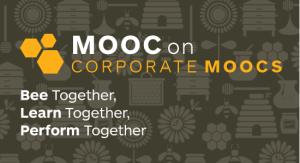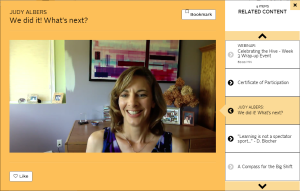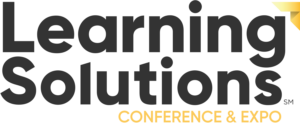 The third and final week of Intrepid Learning’s MOOC on Corporate MOOCs is now complete. This post reflects on my experience in the MOOC, looking at my experience from two separate angles: That of a learner and that as a learning and performance professional. I will start by commenting on the content of the MOOC, and then reflect on the way the learning experience was constructed.
The third and final week of Intrepid Learning’s MOOC on Corporate MOOCs is now complete. This post reflects on my experience in the MOOC, looking at my experience from two separate angles: That of a learner and that as a learning and performance professional. I will start by commenting on the content of the MOOC, and then reflect on the way the learning experience was constructed.
What Did We Learn?
Like week 2, the first module of week 3 set the stage for the final week of the MOOC while revisiting and expanding upon the content of week 2. Week three of the MOOC on Corporate MOOCs was all about implementation. It built upon the learning from the first two weeks and focused on putting what we’ve learned into action.
The next module explored how to “make the case” for MOOCs in your organization. This module provided a detailed path for professionals to follow in making a business case for using MOOCs. I especially liked the linked path that was laid out, starting with the financial objectives and branching through associated business objectives, extending to the pain points hampering the business objectives and finally resulting in the recommendation of using a MOOC as part of the solution. This module even included a template that users can use to help them go through the process on their own – tools are always appreciated.
Next was a module exploring the planning, measurement, and supporting of a MOOC. This was my favorite module of the week. You could probably spend an entire week digging into the details of planning, measurement, or supporting each on their own. This module had plenty of content that did a great job of providing an overview of each area. I especially appreciated the focus on change management. Too often new technologies are inserted into existing workflows without regard to disruption. Part of a good technology implementation plan – MOOCs included – is change management. This module did a great job addressing that need. The modules went into detail exploring all of the questions learning professionals should be asking as they consider implementing a MOOC, including designing the program, developing the content, choosing a MOOC platform, additional supporting technologies, defining learner success, marketing, communications, and much more. This module to me best answered the overarching concern: “What questions do I need to ask before I start down the MOOC path?”. It provided great content and useful tools to help identify and answer the key questions.
 The last module of new content focused on design of a MOOC. There were two key elements from this module that jumped out at me. The first as the emphasis placed on story. I liked the implied questions that started the module, which made you consider the gaps between the story we as learning professionals want to tell, and the story that learners want to hear. Bridging that gap is so important in learning. Even better was the emphasis on curated content over content creation. I’m not saying that content creation is bad; I just don’t see it as the default. Chances are that someone, somewhere has solved the problem you’re looking to solve. Even if there are unique aspects to the subject for your organization, you can curate content for the majority, and focus the content creation efforts on only those areas that really need it. Content curation is a huge part of the future of learning, so it was great to see it emphasized as part of this module. The module also covered the use of video, short-form content, and building in activities and assessment opportunities.
The last module of new content focused on design of a MOOC. There were two key elements from this module that jumped out at me. The first as the emphasis placed on story. I liked the implied questions that started the module, which made you consider the gaps between the story we as learning professionals want to tell, and the story that learners want to hear. Bridging that gap is so important in learning. Even better was the emphasis on curated content over content creation. I’m not saying that content creation is bad; I just don’t see it as the default. Chances are that someone, somewhere has solved the problem you’re looking to solve. Even if there are unique aspects to the subject for your organization, you can curate content for the majority, and focus the content creation efforts on only those areas that really need it. Content curation is a huge part of the future of learning, so it was great to see it emphasized as part of this module. The module also covered the use of video, short-form content, and building in activities and assessment opportunities.
While the design module was the last module of “new content” there were two additional and important modules to close out the week. The first explored how to make the MOOC on Corporate MOOCs better. I liked this module because it continues the fully transparent “we’re in this together” learning approach that has been a constant in the course. I also liked that the questions asked for feedback that essentially functioned as a session evaluation. I always appreciate the free form narrative feedback that people provide in evaluations much more than any standard scoring. The final module was a wrap up to tie everything together. I also like that there was a live webinar (now archived) to recap and celebrate the ending of the MOOC, which provided participants the opportunity to engage with the hosts and moderators live. It was a great way to close out the course experience.
I think the best evaluation I can give for my learner experience in the MOOC for Corporate MOOCs is the fact that I’ve bookmarked the site. I thought the content throughout the course was excellent, and I look forward to revisiting it in the weeks ahead.
The MOOC Experience
Putting back on my Learning and Performance Professional hat, there was a lot to like about this MOOC experience.
Curation in Action
I’m passionate about curation as a growing competency for the L&D professional. While there is a lot of energy around the concept of curation for learning, there are not as many examples of curation in practice. This course was a great example of curation being applied to learning, as was the blend between curated content and content creation.
 The Importance of Responsive Design
The Importance of Responsive Design
I also liked the responsive design that was applied to the MOOC. It provided a great amount of flexibility to participation. Speaking personally, I would estimate that less than half of my participation in the MOOC took place at my desk using my laptop. The majority of my participation honestly took place while lying in bed in the evenings, using my iPad. The experience of the MOOC on the tablet was different than what I experienced on the desktop – appropriately so. If I shifted the tablet from landscape to portrait, the content adjusted accordingly. The same responsiveness extended to my iPhone, with an experience that adapted to that screen as well. There were a number of times – such as waiting on line at the grocery store, or sitting in the car waiting to pick my daughter up from dance class – that I logged into the MOOC on my phone. The design of the MOOC adjusted to the phone and tablet making consuming the content and participating in the MOOC comfortable, regardless of the device.
The Power of Multiple Voices
I also liked the collaborative approach that was used to develop the MOOC content. This collaboration was present in a number of ways, from the discussion boards, to the curated blog posts and articles, to the videos from experts and more. I especially liked the way the videos were handled. These were not videos of “teaching”. Each of the videos was positioned as an expert being presented with a question and sharing their answer. There were a number of people who helped shape the content and experience of the MOOC, and that is no small part of what made it a powerful experience.
So What’s Next?
So now that the formal timeline of the MOOC on Corporate MOOCs has passed, what happens next? For a lot of MOOCs, once the course ends, so does the experience. I don’t see that being the case here.
While the MOOC for Corporate MOOCs itself has ended, it ended with the feeling of a conversation that has just gotten started. As I mentioned earlier, there’s a lot of great content within the MOOC, and I look forward to revisiting content that really resonated with me, and digging deeper into areas of the MOOC I missed the first time around. More importantly, the MOOC on Corporate MOOCs started a conversation that I know I and others will look to continue in other spaces as the MOOC becomes a more established part of the corporate L&D landscape.
It sounds like Intrepid Learning will be holding another MOOC like this in the future as part of that conversation, so keep your eyes out for details on that if you missed any of the MOOC this time around. I know I look forward to revisiting this MOOC both from the perspective of continuing this conversation, and seeing how the MOOC might evolve in a second iteration.







